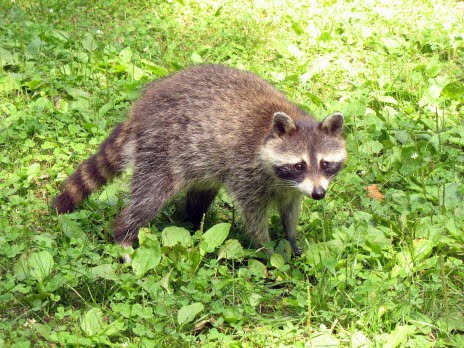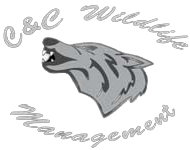RACCOONS
All raccoons are nocturnal and omnivorous – eating berries, insects, eggs and small animals. Raccoons sometimes wash, or douse, their food in water before eating it. It is unknown why raccoons perform dousing, but cleaning food is unlikely to be the reason. Studies have found that raccoons engage in dousing motions when water is unavailable; researchers note that captive raccoons are more likely than wild raccoons to douse food. It has been suggested that captive raccoons are mimicking fishing and shellfish-foraging behaviors. It may also be that the raccoon is searching for unwanted material, as water is thought to heighten their sense of touch. As city dwellers in the United States and Canada increasingly move into primary or second homes in rural areas, raccoons are often considered pests because they forage in trash receptacles. The raccoon has also adapted well to city life, and in cities such as Toronto the raccoon is, after the grey squirrel, the most common urban pest. Introduced into Germany in the 19th century, raccoons seeking food in wine cellars and storage areas have become a threat to the country’s wine industry. Beginning in April 1934 raccoons, which were being commercially farmed in Germany for their then-fashionable fur, were experimentally released into the wild . Population growth greatly accelerated in 1945 when disruption of the infrastructure led to numerous raccoons escaping from farms across Germany. Because they seemed to have minimal impact on forest ecology, raccoons were a protected species. Lately, however, the population density in some regions may have reached 100 raccoons per square kilometer and hunters have been offered rewards to cull the animals. Raccoons can carry Baylisascaris roundworm, distemper, and rabies. Of the approximately 8,000 documented animal rabies cases in the United States, raccoons constitute approximately 50% (Krebs et al. 1996, pp. 2031-2044).

